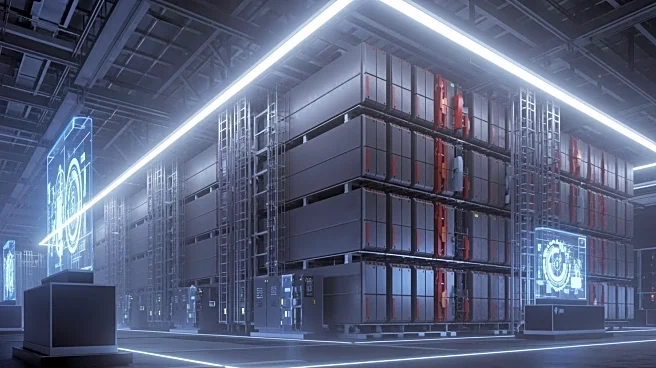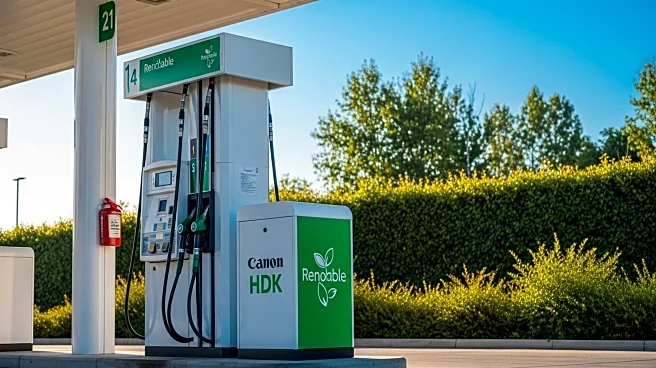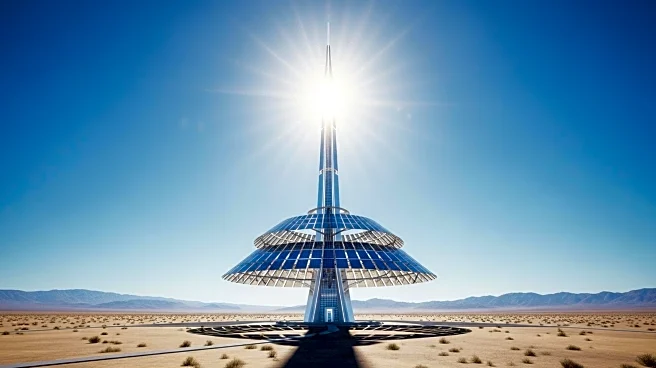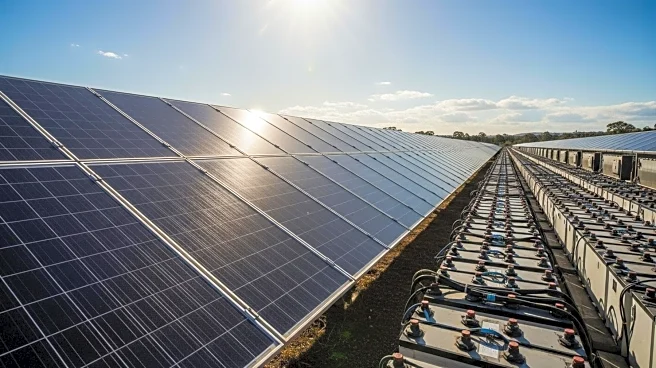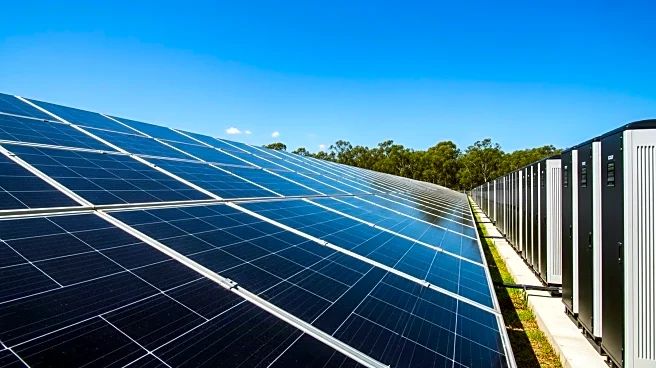What's Happening?
Rondo Energy, a Bay Area startup, has activated the world's largest industrial heat battery at Holmes Western Oil Corp.'s site in Kern County, California. The installation includes a 20-megawatt solar
array paired with a 100-megawatt-hour battery that heats clay bricks to generate steam for oil extraction. This initiative aims to reduce carbon emissions by replacing natural gas boilers, thus avoiding 13,000 tons of CO2 emissions annually. The project benefits from California's Low Carbon Fuel Standard, allowing Holmes to generate environmental credits. Rondo's technology is also being explored for applications beyond fossil fuels, such as green cement and aluminum production.
Why It's Important?
The deployment of Rondo's heat battery represents a significant step in integrating renewable energy with traditional industries, potentially reducing the carbon footprint of oil extraction. This aligns with California's environmental goals and offers a model for other states and industries. The project highlights the growing interest in clean technology partnerships within the fossil fuel sector, which could accelerate the transition to sustainable energy practices. Additionally, the environmental credits generated can be sold or used to offset emissions, providing economic incentives for companies to adopt cleaner technologies.
What's Next?
Rondo Energy plans to expand its technology applications beyond the U.S., focusing on Europe due to favorable business conditions and rising natural gas prices. The company has partnered with EDP to install heat batteries across Europe, indicating a shift towards international markets. The success of this project may encourage further collaborations between clean tech startups and traditional energy companies, potentially leading to more widespread adoption of renewable energy solutions in industrial processes.
Beyond the Headlines
The integration of clean technology in fossil fuel extraction raises ethical questions about prolonging the life of carbon-emitting infrastructure. However, it also presents an opportunity to reduce emissions in the short term while transitioning to greener alternatives. The project underscores the importance of consistent policy environments for infrastructure development, as uncertainty can hinder long-term investments in clean technology.
